Blog
What is Earth Day?
Read moreAmazing animals with stripes: facts and photos
In the animal kingdom, stripes aren’t just for looks—they’re also survival tools. From a tiger’s majestic coat to a zebra’s distinctive bands, stripes help animals blend into their surroundings, masking them from predators or prey. This natural camouflage is vital for surviving in the wild. Stripes can also send a clear message to other animals, or even humans, to stay away—just look at snakes and skunks.
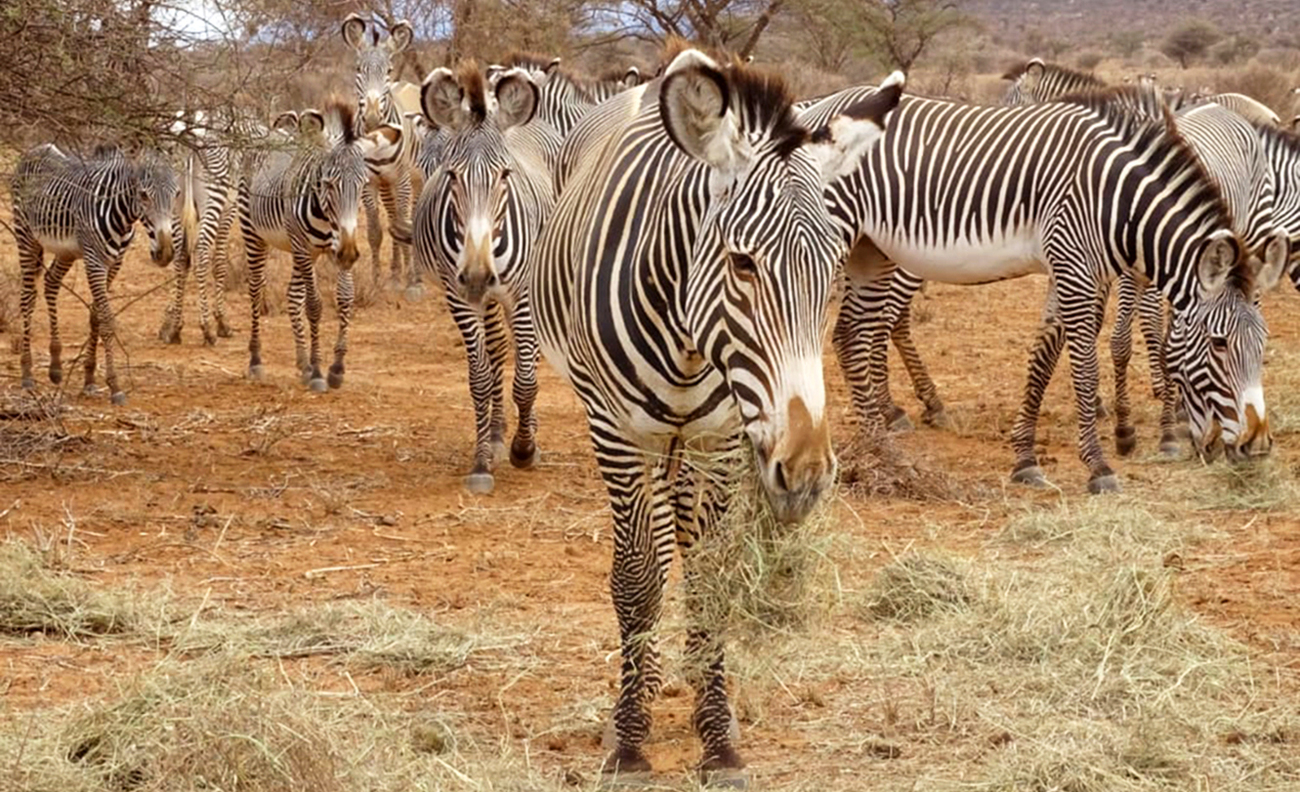
IFAW is a conservation and rescue organisation helping wildlife around the world, including many of these incredible striped animals. Learn more about our work or how you can get involved.
By understanding why animals have stripes, we can uncover how they’ve adapted to best survive in their environments. Let’s take a closer look at the practical side of these eye-catching patterns.
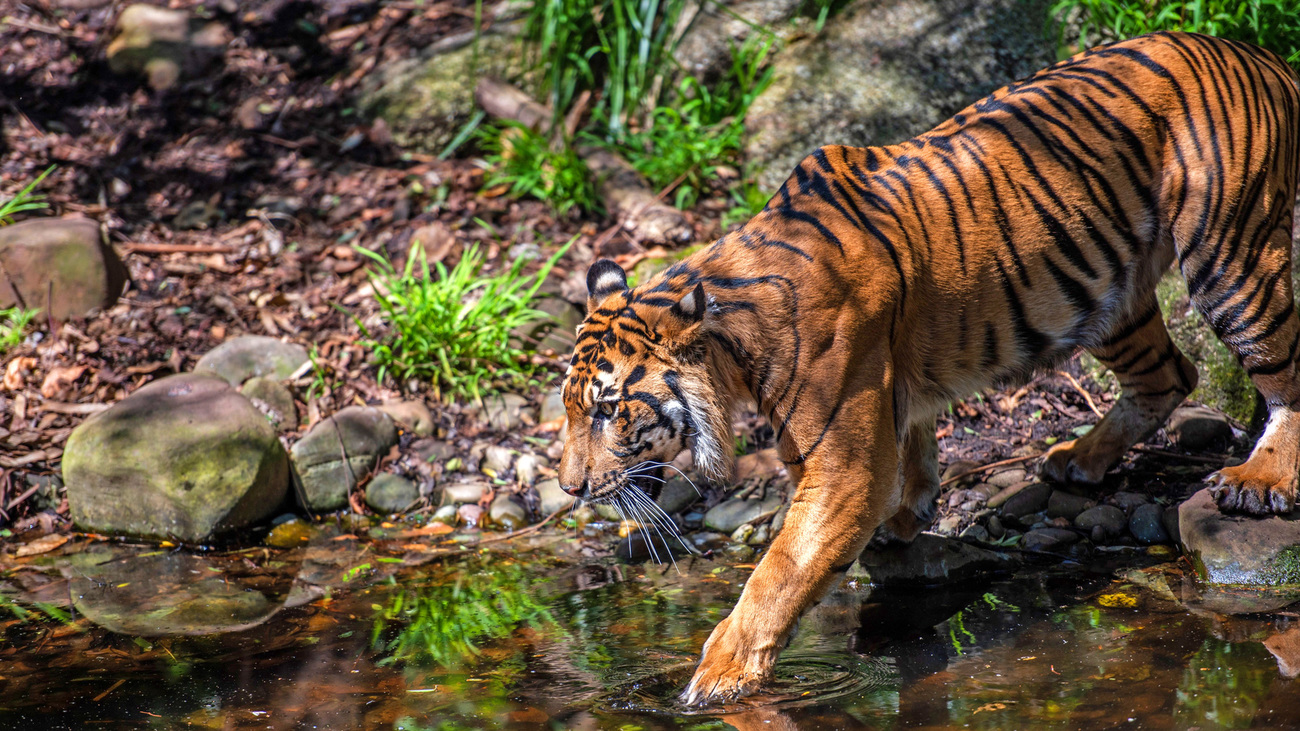
Tigers (Panthera tigris) are the largest members of the cat family and one of the most iconic animals due to their recognisable orange-and-black striped coats. There are five subspecies of tigers still alive today, all of which are endangered. The South China tiger is classed as critically endangered, and three tiger subspecies have gone extinct.
Tigers’ distinctive black stripes against their reddish-orange coats and white underbellies provide camouflage in their natural habitats. Each tiger’s stripe pattern is unique, much like human fingerprints.
These stripes are a crucial adaptation for survival, aiding in stealth and concealment. The vertical stripes break up their outline in dense forests and grasslands, making it easier for them to stalk their prey undetected.
Zebras are hoofed mammals known for their distinctive black-and-white striped coats—but they aren’t just for show. There are three zebra species: the plains zebra (Equus quagga), the mountain zebra (Equus zebra), and Grevy’s zebra (Equus grevyi). The IUCN Red List classifies the plains zebra as near threatened, the mountain zebra as vulnerable, and Grevy’s zebra as endangered.
All found in Africa, their stripes vary in pattern between species, with the plains zebra having wider stripes and Grevy’s zebra exhibiting narrower and more numerous stripes. Stripe patterns also differ on an individual level.
While it was once thought that zebra stripes mimic grass, shielding them from predators, the main function of zebra stripes is actually to protect them from biting horseflies—zebras that live in areas without these flies tend to have less pronounced stripes. The stripes also create a dazzling effect when zebras move in a herd, making it difficult for predators to single out an individual.
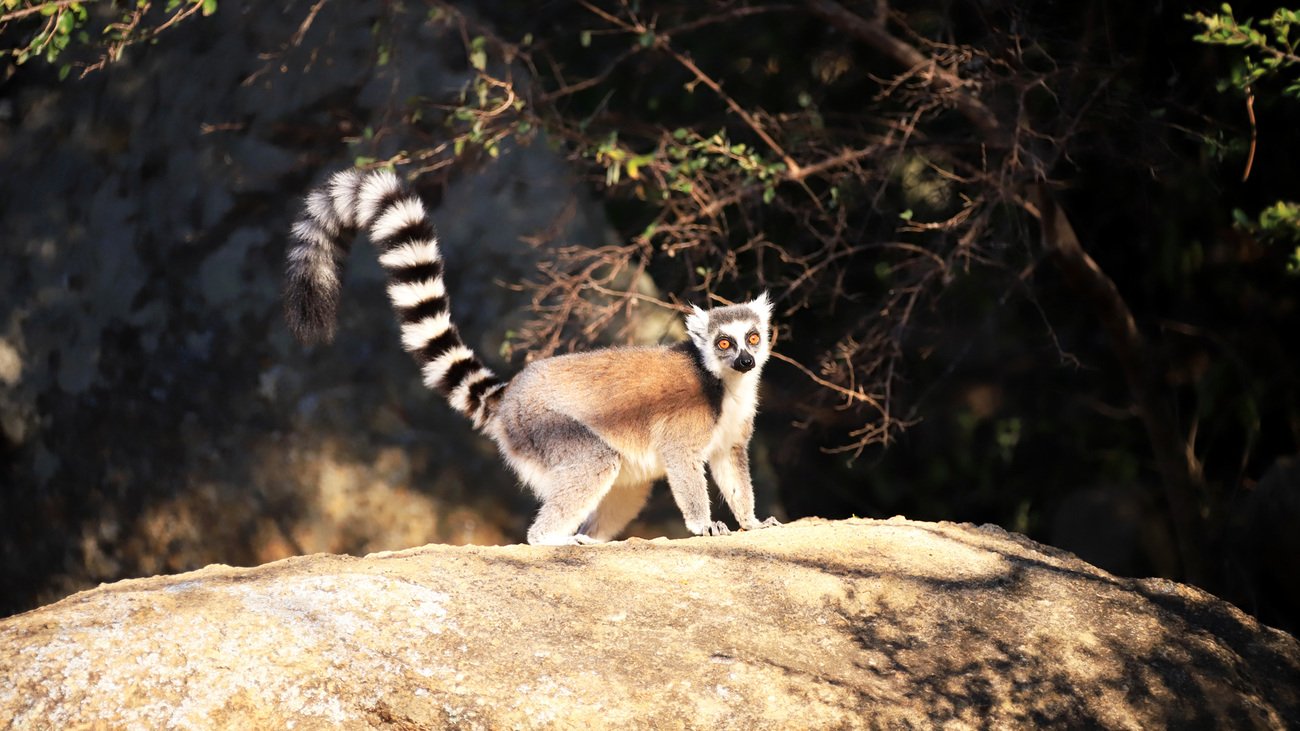
The ring-tailed lemur (Lemur catta) is a primate native to Madagascar, with a long, striped, bushy tail. This lemur species is classed as endangered, primarily due to habitat destruction and hunting.
Ring-tailed lemurs are found in the forests and scrublands of southern and southwestern Madagascar. Their tails are longer than their bodies and play a significant role in social communication and balance.
The lemurs’ tails, with their distinctive pattern of 13 black and white rings, help them communicate with their troop. They hold their tails high so they can follow each other through the forest, and they also wave their tails like warning flags when they encounter rival groups.
Coral snakes are a group of highly venomous snakes, with over 100 species, belonging to the Elapidae family. Most are considered least concern, though some species, including the Catayamo coral snake (Micrurus catamayensis), the Merida coral snake (Micrurus meridensis), and the Roatan coral snake (Micrurus ruatanus), are classed as endangered.
They are known for their distinctive colouration, typically featuring bands of red, yellow or white, and black. These snakes serve as an example of aposematism, where bright colours warn potential predators of the animal’s toxicity.
The stripes of a coral snake also help them stay camouflaged among fallen leaves and forest debris.
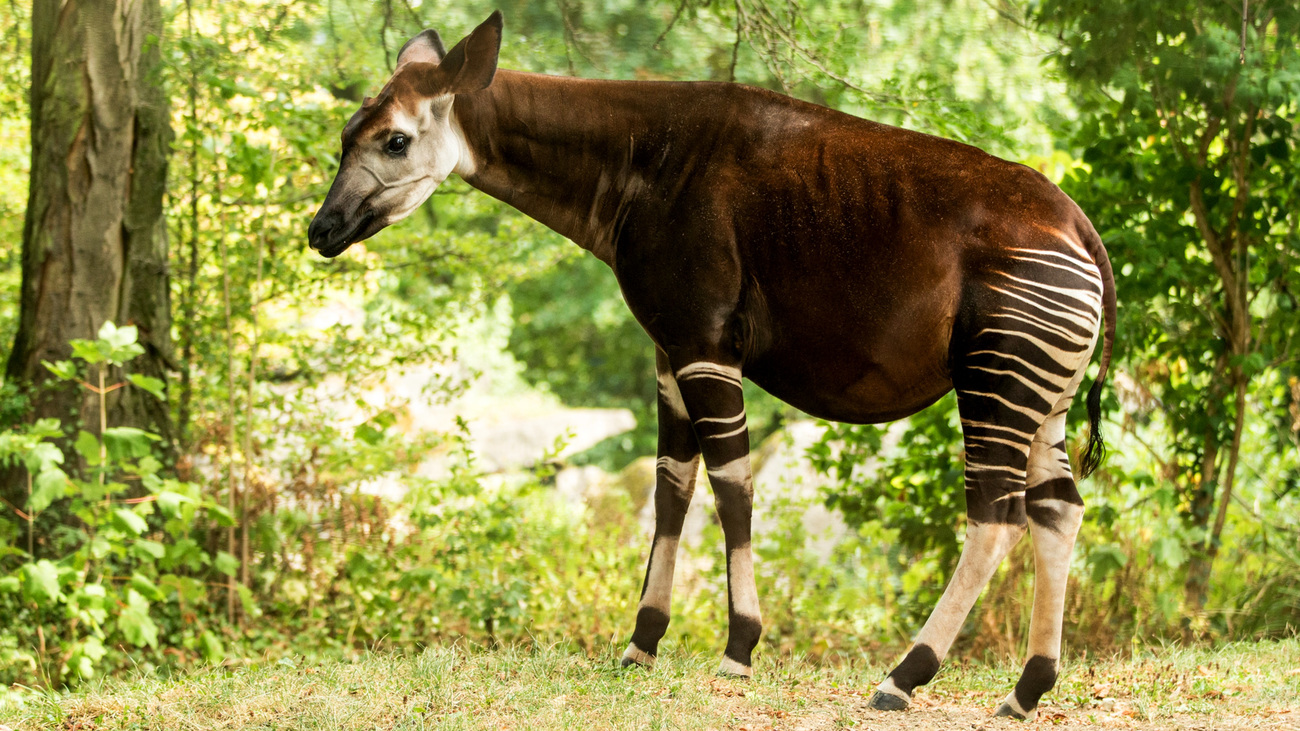
The okapi (Okapia johnstoni) is a unique mammal found only in the Congo Basin. It is the only living relative of giraffes. Classed as endangered, the okapi faces threats from habitat loss, hunting, and other human activity.
With brown or black bodies, okapis have striking, zebra-like white stripes on their hindquarters and legs, which provide excellent camouflage in their shaded, dense forest habitat. These stripes help break up their outline and mimic the play of light and shadow on the forest floor, making it harder for predators like leopards to spot them.
The okapi’s stripes also help individuals recognise and follow each other in dense underbrush or dark forests—particularly mothers and their calves.
The striped hyena (Hyaena hyaena) is the smallest of the true hyenas, distinguished by its shaggy coat with black vertical stripes against grey or beige fur. The species is near threatened, primarily due to habitat loss, human-wildlife conflict, and declining prey availability.
Striped hyenas are found across North and East Africa, the Middle East, and the Indian subcontinent. Their vertical stripes and shaggy hair help them blend into their habitat’s rocky and grassy landscapes, offering camouflage from both prey and potential threats.
They also have bushy manes stretching along their backs that can be erected to make the hyena appear larger and more intimidating to potential competitors—an essential asset in its role as a scavenger.
The striped polecat (Ictonyx striatus), also known as the zorilla, is a small but fierce member of the weasel family. With a bold black-and-white striped pattern running from head to tail, it looks similar to a skunk and is listed as least concern by the IUCN.
Striped polecats are native to sub-Saharan Africa, inhabiting savannahs, grasslands, and semi-arid regions. Their stripes warn potential predators that they can defend themselves with a potent chemical spray.
Similar to skunks, this defence mechanism involves spraying a foul-smelling secretion when threatened, with a strong odour that can deter predators and rivals.
The polecat’s stripes also play a role in camouflage, helping it blend into the dappled shadows of its environment.
The striped marlin (Kajikia audax) is a highly prized game fish known for its speed and agility. It is found in temperate waters of the Pacific and Indian Oceans and is classed as least concern.
Striped marlins have elongated bodies, spear-like bills, and vivid blue and silver colouration with prominent horizontal blue stripes along their sides. These stripes can become more pronounced when the marlin is excited or hunting, a phenomenon known as ‘lighting up’.
The stripes help with camouflage in the open ocean, blending with the patterns of light filtering through the water, making it harder for both prey and predators to detect them.
The stripes can also confuse prey during high-speed chases. By rapidly changing the appearance of their stripes, striped marlins can disorient schools of fish, making it easier to single out and catch individuals.
The striped skunk (Mephitis mephitis) is a very recognisable member of the skunk family thanks to its black-and-white coat and potent defence mechanism. Native to North America, they’re classed as least concern, reflecting their adaptability and wide distribution.
Striped skunks have black fur with two prominent white stripes running down their back, converging at the head. This serves as a warning to potential predators about the skunk’s notorious defence strategy: the ability to spray a foul-smelling secretion from glands located near its tail.
The spray can reach up to 20 feet and contains sulphur-based compounds that can cause irritation and temporary blindness. It effectively wards off would-be predators such as coyotes, foxes, and domestic pets.
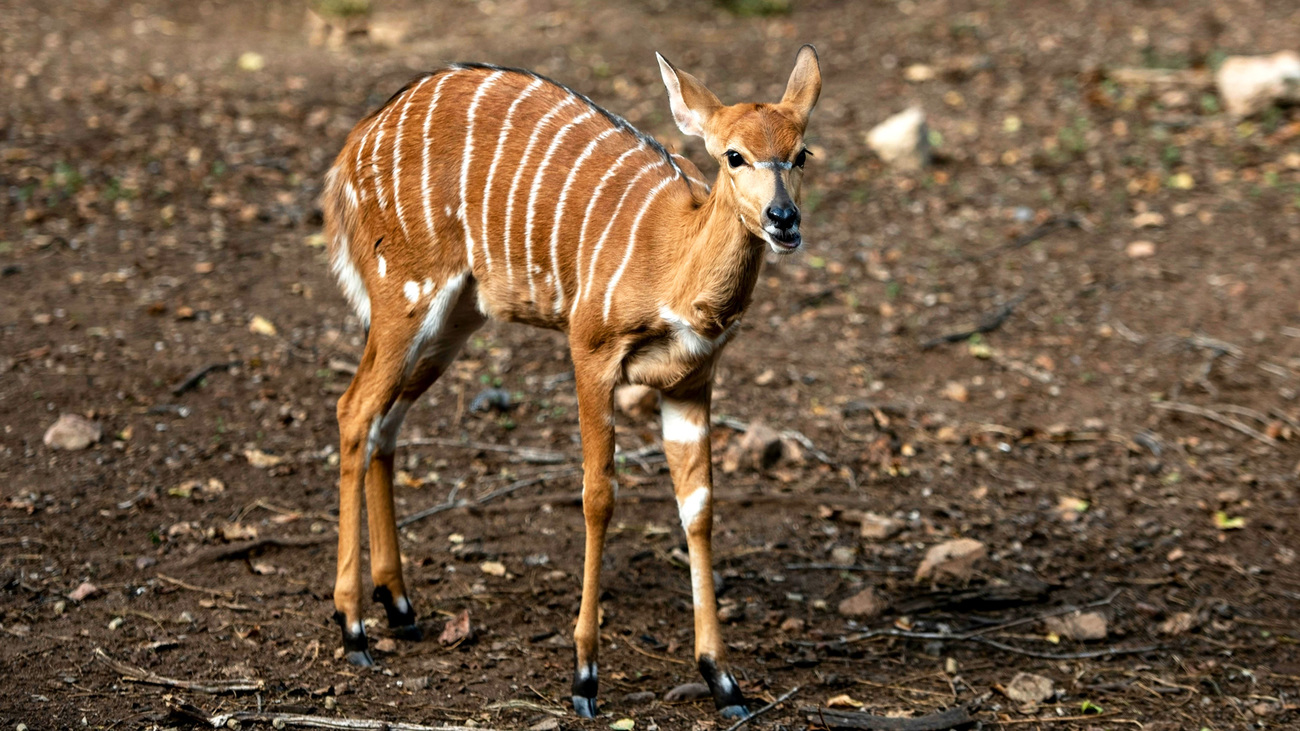
The bongo (Tragelaphus eurycerus) is an antelope species known for its vivid coat adorned with white vertical stripes. The bongo, found in the forests of Central and West Africa, is classed as near threatened.
These large, nocturnal herbivores have a reddish-brown coat with white stripes—an effective camouflage. These vertical stripes mimic the patterns of sunlight filtering through the trees, breaking up the animal’s outline and making it harder for predators to spot them. Additionally, the bongo’s keen hearing and cautious nature further enhance its ability to avoid detection.
The Malayan tapir (Tapirus indicus) is a large, herbivorous mammal native to the rainforests of Southeast Asia and is classed as endangered due to habitat loss, fragmentation, and hunting.
Malayan tapirs are distinguished by their unique colouration. This species has a black body and distinctive white markings on its midsection and rear end, resembling saddles.
Juvenile Malayan tapirs have a pattern of stripes and spots, though they lose this patterning as adults. This pattern serves as camouflage against predators during these vulnerable first few months.
Grandidier's mongoose (Galidictis grandidieri) is a rare mongoose endemic to the dry forests of southwestern Madagascar. This mongoose is currently an endangered species.
Despite its small size, the animal plays a vital role in the ecosystem by controlling insect populations and contributing to nutrient cycling. Its fur is predominantly brown, with darker markings on its face and legs.
The specific function of any striping or markings on Grandidier’s mongoose is not well understood, as they’re elusive and hard to study. However, for small, ground-dwelling mammals, camouflage is crucial for effectively evading predators and ambushing prey.

The Killdeer (Charadrius vociferus) is a small shorebird found in various habitats across North and Central America. It is known for its loud call, bright colour, and striking markings. Thanks to its stable population and widespread distribution, the killdeer is classed as least concern.
Its distinctive appearance includes two bold black bands across its white chest, extending down its belly, breaking up the bird’s outline against the ground, rocks, or gravel.
Killdeer often lay their eggs directly on the ground in shallow depressions. Their stripes help protect their nests and eggs from being easily detected by predators such as foxes, raccoons, and birds of prey, ensuring their reproductive success.
The aardwolf (Proteles cristata) is native to eastern and southern Africa. Despite its name, which means ‘earth wolf’ in Afrikaans, the aardwolf is not closely related to wolves. Instead, it is the smallest member of the hyena family. The IUCN lists these animals as least concern.
With sandy-coloured fur and distinctive black stripes running down their back and legs, aardwolves are masters of camouflage, blending into the grasslands and scrub habitats where they live.
They also sport a shaggy mane around their neck and shoulders, which they can inflate when feeling threatened, to make them appear more intimidating to predators.
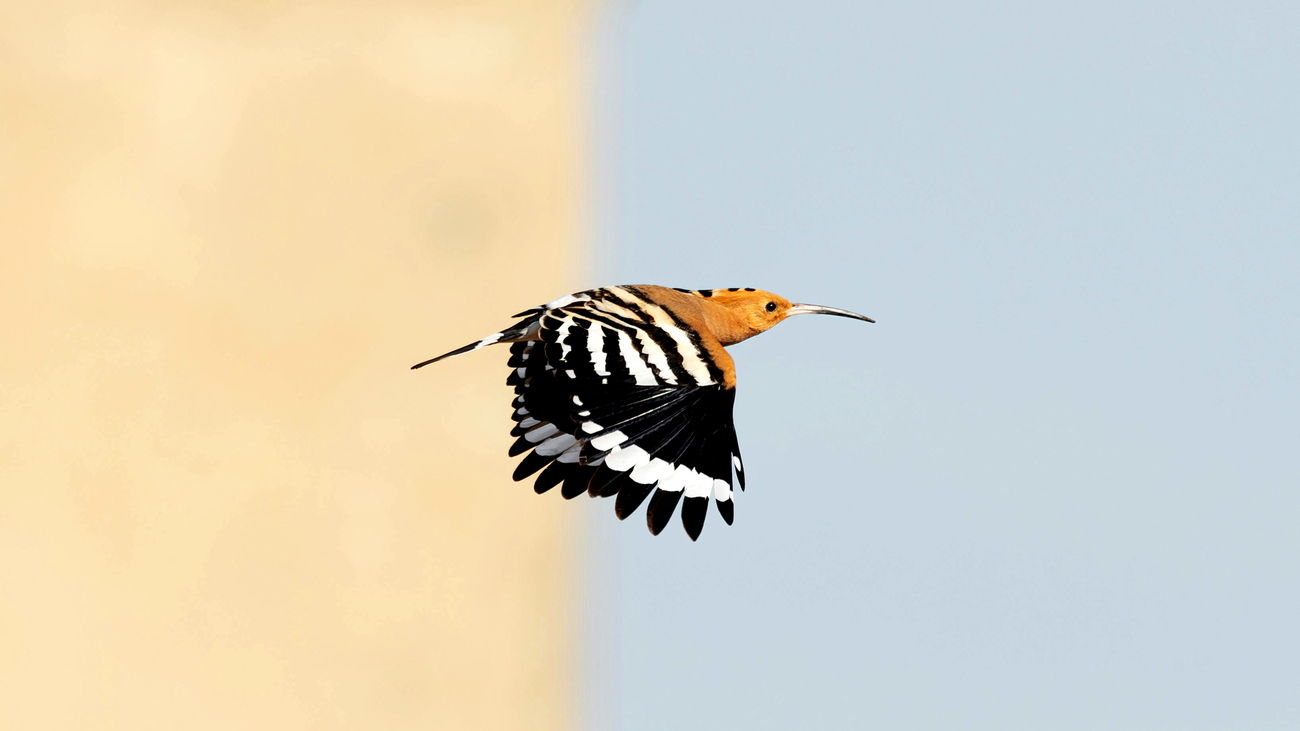
The Eurasian hoopoe (Upupa epops) is a colourful bird known for its unique appearance and distinctive ‘crown’ of feathers. Widespread across Europe, Asia, and parts of Africa, it inhabits various open habitats and is listed as least concern.
Eurasian hoopoes are recognised by their long, slender bills, cinnamon-coloured plumage, and black and white wings with broad, black tips. The prominent crest of feathers on their head can be raised or lowered depending on their mood or level of agitation.
These black and white wings provide effective camouflage while perched or resting, blending in with dappled sunlight and shadows, and protecting them from aerial predators.
Stripes aren’t the only amazing adaptations that help animals survive and thrive in the wild. Want to learn more about fascinating animals around the world? Check out IFAW’s animal pages.
Our work can’t get done without you. Please give what you can to help animals thrive.
Unfortunately, the browser you use is outdated and does not allow you to display the site correctly. Please install any of the modern browsers, for example:
Google Chrome Firefox Safari